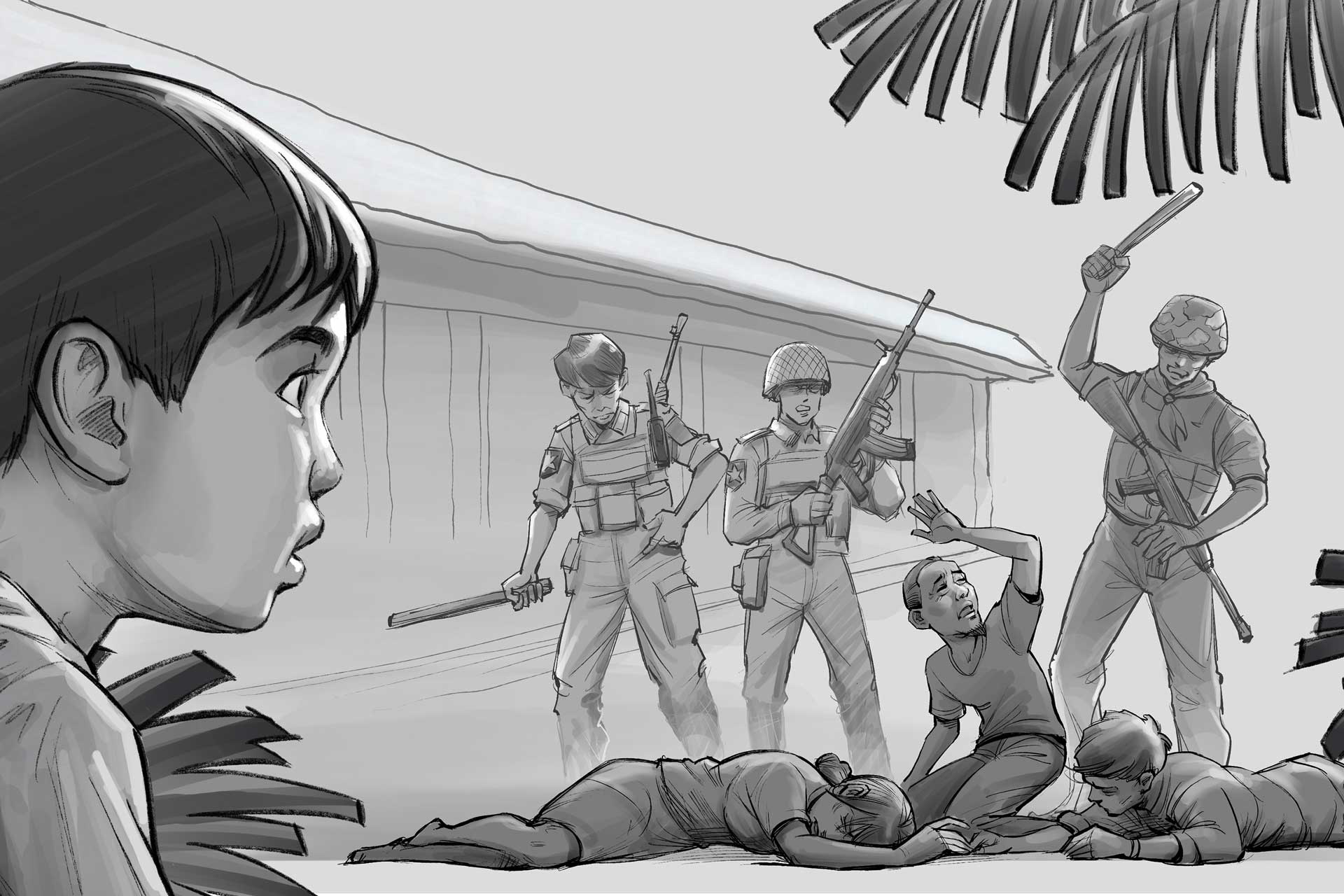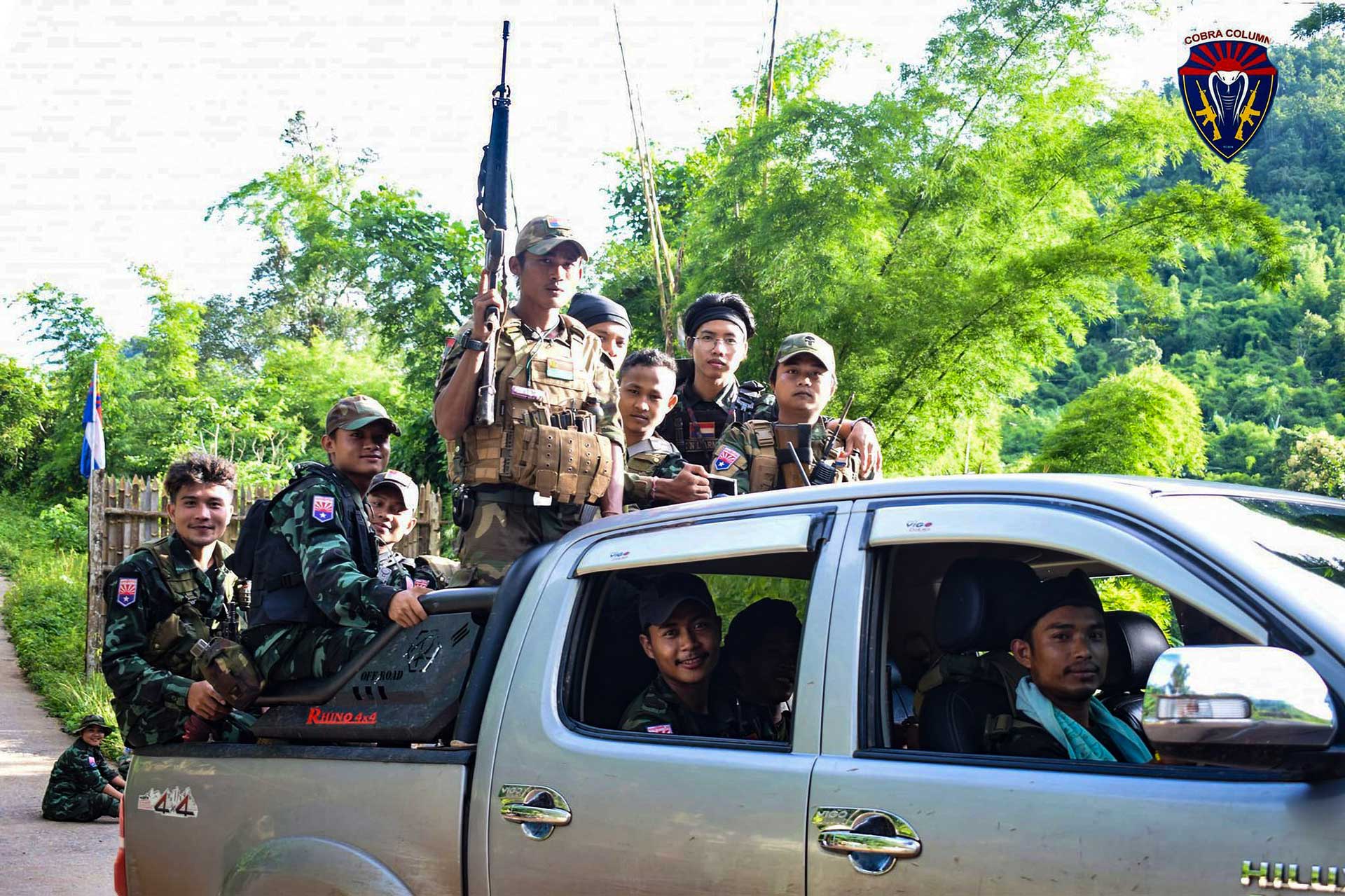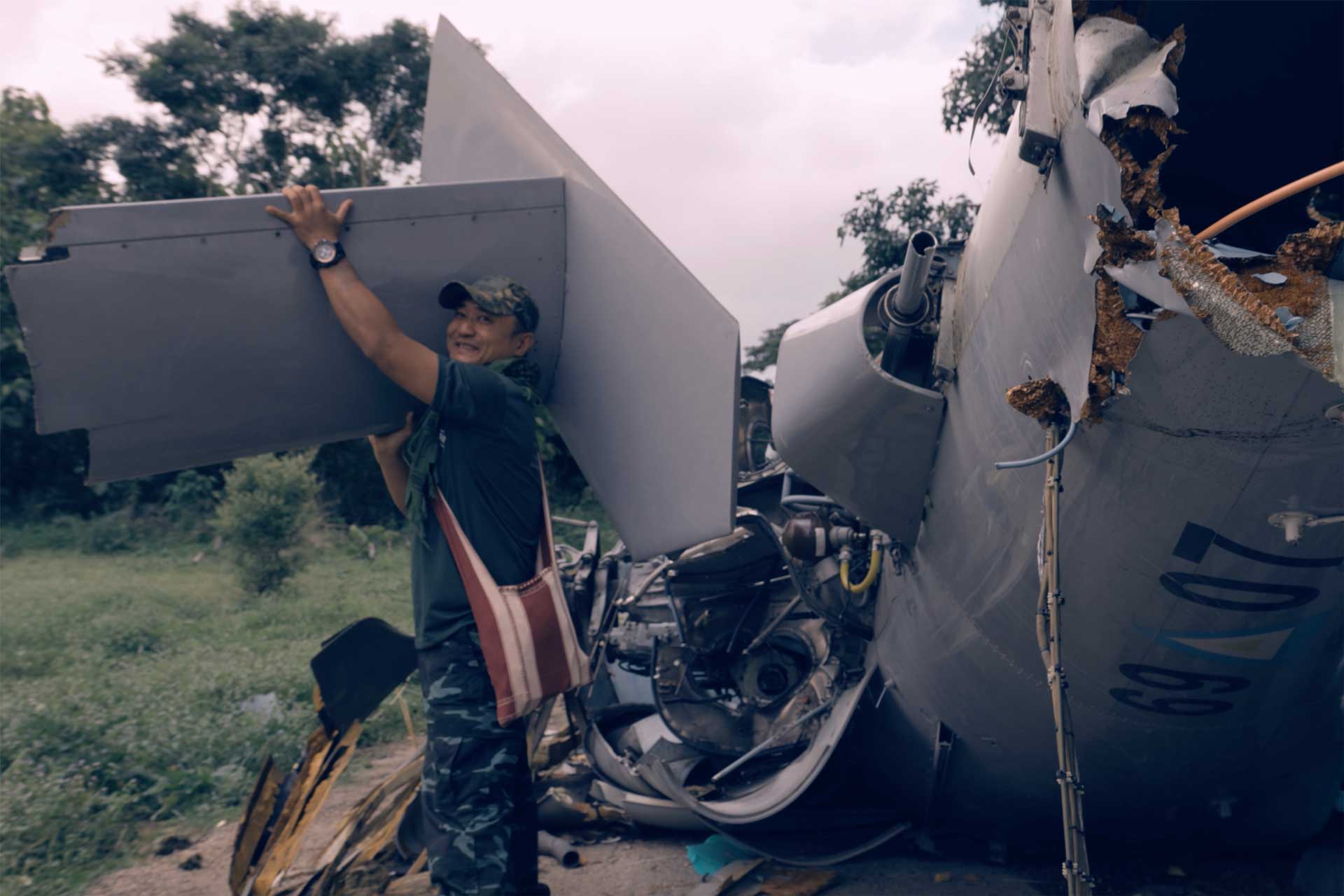Tall, square-jawed and with a facial expression set to stern, Saw Kaw looks every bit the rebel commander that he is.
But as he sits in a secret camp of Myawaddy township in Kayin (Karen) state, strumming his guitar and singing songs he learned in church, it’s easy to wonder what shape the 37-year-old’s life might have taken had circumstances allowed.
As it was, Saw Kaw was born in a small village in eastern Myanmar and into one of the longest running insurgencies in the world. Almost ever since Burma gained independence from Great Britain in 1948, ethnic Karen forces from small villages in the mountainous areas near Thailand have battled successive military juntas for greater autonomy.
Among them was Saw Kaw’s father, who was a member of the Karen National Union, or KNU.
When Saw Kaw was seven, soldiers raided his village in search of his father, who wasn’t there at the time. Saw Kaw said they found and beat his uncles and an elderly grandfather instead, sending his mother, seven months pregnant at the time, fleeing into the surrounding jungle.

For safety reasons, he said the family has remained fractured ever since, constantly on guard that the military or their supporters could use one to get to another.
“Hello, Mom, how are you,” Saw Kaw sings, playing one of his favorite songs. “I miss you so much. Please pardon me as I cannot come back to you.”
A long struggle
The Karen are among the largest minority groups in Myanmar, which is thought to have more than 130 different ethnicities with various relationships with the Burman majority that has held the reins of power in the country.
The complicated ethnic make-up is seen as a barrier to lasting peace. In-roads other armies have made against junta forces to the north and west don’t necessarily indicate the country can emerge from its complicated civil war whole.
But the KNU has committed itself to the idea of a federation in which it and other groups have a high degree of authority over their own affairs but participate in a larger, national government. They are allied with the National Unity Government, a group of exiled former government officials helping to fund resistance movements and build a lasting peace should the military collapse.
As a military commander, Saw Kaw doesn’t have time to weigh all the possible political dynamics. But the force he controls – Cobra Column – is an unusual joint effort of seasoned fighters from ethnic armies and young, largely Burman revolutionaries who no longer wish to be governed by the junta. It is an NUG force, not a KNU one.
"I cannot precisely predict when this significant event will conclude, but I firmly believe that this war must come to an end,” he said. “It is not solely an arm revolution; the entire populace is involved.”
In the shared tragedy, he hopes a lasting cohesion can be formed.
A coup, then civil war
Many of the Karen are Christian due to a history of missionaries operating in the area during colonial rule, and Saw Kaw learned to play the guitar in his church. Whatever early musical aptitude he demonstrated didn’t much matter. He always knew what his future held – fighting for his people. After attending college in Thailand he returned home to join the Karen National Liberation Army, or KNLA.
His life has seen peace, however. In 2015, the KNU and the Myanmar military negotiated a ceasefire in the capital of Naypyidaw. Saw Kaw was part of the delegation.
By then, Myanmar's military leaders began to open the country up to the world after decades of isolation. The agreement fell apart, though, in 2021 when Senior Gen. Min Aung Hlaing led a coup that pushed out the civilian government of the National League for Democracy, claiming election irregularities that it has yet to prove.
Some of the NLD members fled to Lay Kay Kaw, a town established with the help of the Japanese as a refuge for Karen displaced in the region’s long-simmering conflict.

The city, which was known as a “peace town” symbolizing the new detente between the military and rebel forces, became instead a locus where People’s Defense Forces (PDFs) sought training from people like Saw Kaw.
“With deep sympathy, I don't want anyone else to suffer as we have,” he said in an interview from his camp, not far from the front line where rebels are trying to hold off a large collection of government troops.
“If people in other places experienced what’s happening in this country, they wouldn’t be able to endure it. It’s truly unbearable.”
Hunting former NLD members, the military attacked Lay Kay Kaw in December 2021, triggering a return of hostilities with the KNU and its armed units. Fighting escalated throughout 2022 and 2023, spreading to towns and villages in the Myawaddy, Kawkareik and Kyainseikgyi districts.
Initially, Saw Kaw said the fledgling PDF units tried to hold off the onslaught with old Tumi guns, flintlock rifles used against the British more than half a century ago.
Now his battle-hardened troops are armed with heavy weaponry and drones to scout enemy positions. They’ve fought military battalions with between 100 and 300 soldiers in strategic places around Myawaddy, including battles in strategic areas like Hpalugyi, Let Khet mountain and Thingan Nyi Naung.
And they’ve scored a number of victories.
Battlefield successes and a desire for peace
Saw Kaw speaks with pride of time when his troops shot down a helicopter carrying a key military strategist and a battalion commander, narrating the scene like a sports analyst.
"After setting up the heavy weapons and drones, the helicopter approached directly,” he said. “First, the sniper took a shot, followed by firing from the .50-caliber machine gun.
“Then, it was time for the heavy weapons. We had to target their landing spot, so we were ready with heavy weapons and drones. I am not sure if it was the sniper or the .50-caliber shot that hit, but the helicopter went down.”
The commander and the strategist were both killed.

More significantly, Cobra Column helped to capture the military’s Battalion 356, taking about 300 soldiers prisoner.
Now the Cobra Column is trying to fend off the junta’s Aung Zeya operation, a massive effort begun last spring to fully control Myawaddy and its surrounding areas, from the foot of the Dawna mountain range to the west. The outcome may help determine when the conflict, which has killed thousands and displaced tens of thousands, concludes.
Saw Kaw and fellow fighter Da Baw and their troops are trying to prevent the military column from advancing.
The fighting has kept Saw Kaw away from his wife and two young daughters for their safety, another example of history repeating itself. He hopes the battle will be over soon.
"Then, I no longer wish to be a soldier,” he said. “Since my youth, I've been trapped in this vicious cycle, and now I aspire to improve underdeveloped areas.
“I want to see people living freely and happily.”